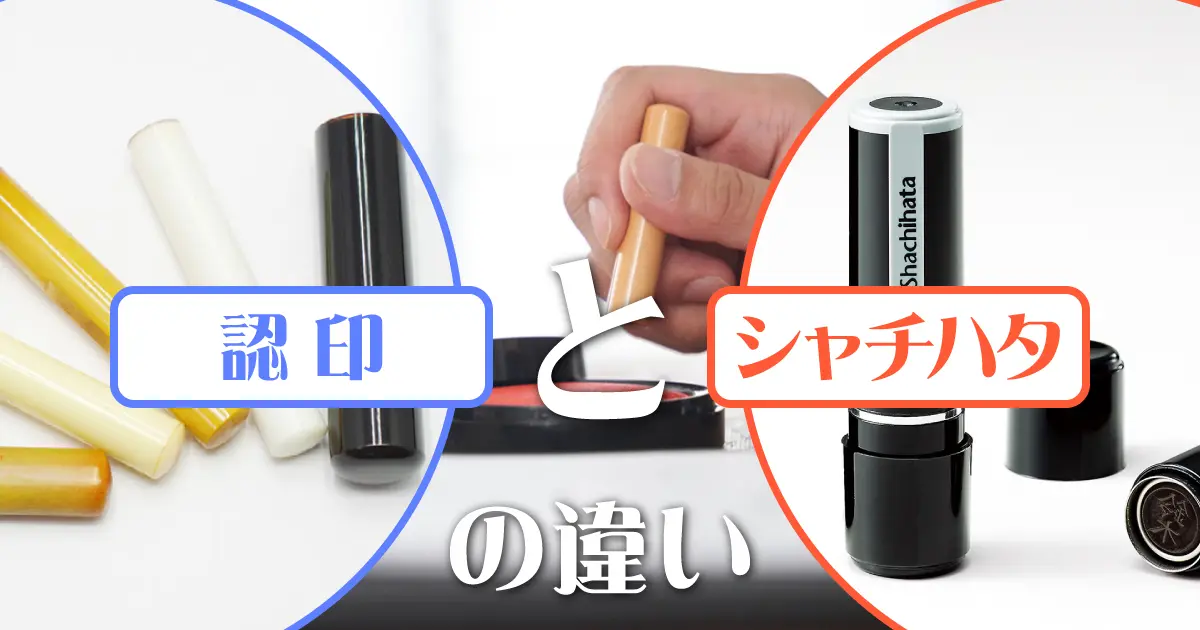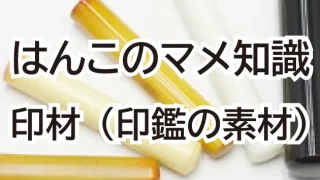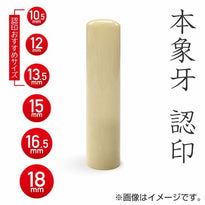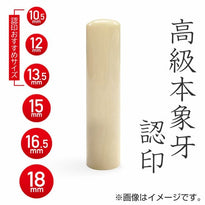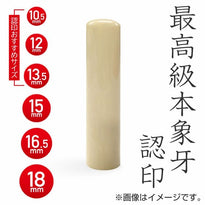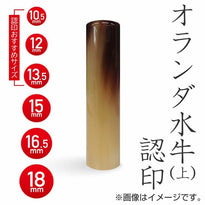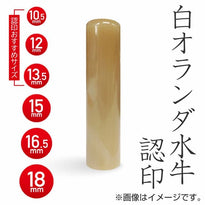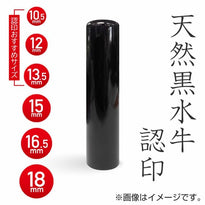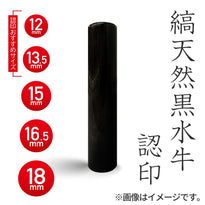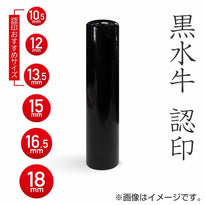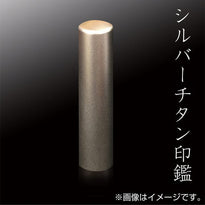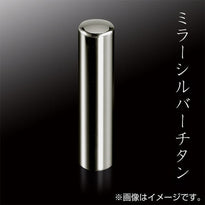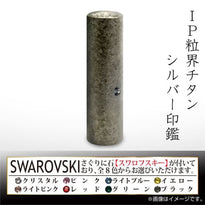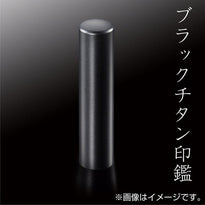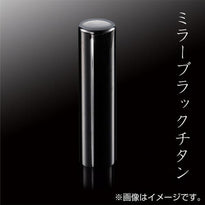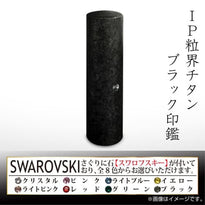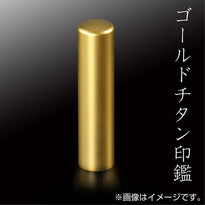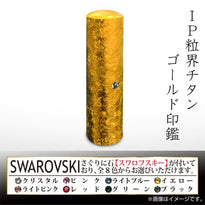Among the types of stamps, it can sometimes be difficult to distinguish between the seal and the shachihata. If the other party specifies something like ``Please use a registered seal'' or ``No Shachihata'', you don't need to think too much about it, but if the decision is left to your own discretion, you may be confused as to which one to use.
Therefore, in this article, we will explain the outline of the seal and the difference from Shachihata. It also includes information on materials and fonts for HANKO such as registered seals and registered seals.
- Overview of registered seal
- Difference between seal and Shachihata
- Merit and demerit of each seal and Shachihata
- Situations when using a registered seal
- Material of the seal (HANKO) (typical types of seal materials)
- Points to remember when creating a seal
- HANKO size (diameter)
- Typeface of personal seal (HANKO)
- FAQ
- summary
Overview of registered seal
A personal seal generally refers to a HANKO with an individual's name on it.In daily life, by affixing a personal seal, you are expressing your intention, saying, ``I have personally verified this.I approve.''
On the other hand, a registered seal is a HANKO that must be registered at the government office that has jurisdiction over the place of residence.It is so important that you may be required to submit a certificate of HANKO registration when affixing a registered seal, and only one person can own one. It is used when exchanging important contracts such as rental and insurance. If you move and the government office that has jurisdiction over your place of residence changes, HANKO registration will be automatically deleted when you complete the address change procedure. Therefore, you will need to register HANKO again at the government office that has jurisdiction over your new residence. Compared to the registered seal, which has limited uses, the registered seal can be used for a wide range of purposes. For convenience, a person can own as many copies as they want, one for work, one for home, etc.
Difference between seal and Shachihata
I will explain the difference between the registered seal and the Shachihata while describing the characteristics of each.
What is killer whale grouper?
Shachihata actually comes from the company name of Shachihata Co., Ltd. As Shachihata name stamps, mainly the "Name 9", became widespread in society, self-inking stamps and name stamps came to be called Shachihata. In addition to Shachihata, self-inking stamps and name stamps are also made by Sanby and Brother.
The unique feature of the Shachihata ink stamp is that you can fill the main body with ink and use it without a red ink pad or ink pad. Because of its convenience, many people have one or two at home or at work.
How to use a registered seal and Shachihata
When using it for official procedures such as at a government office or company, there is basically no problem as long as you affix a seal. Shachihata, on the other hand, is often used for relatively simple interactions such as office work or receiving packages.
Shachihata is sometimes considered unusable for some documents because the stamp surface is made of rubber and easily deforms.
In addition, although vermilion is used for HANKO, since Shachihata uses ink, there are concerns that the ink may fade over time if the documents need to be stored for a long time.
The seal is vermilion. Orca grouper is ink.
Mitsuin and Shachihata need to be used differently depending on the occasion, and the materials used for coloring them are also different. The seal is stamped with vermilion, but the Shachihata requires refilling the ink cartridge built into it. When the Shachihata/penetration seal ink runs out, you can refill it and continue using it. Please use the special ink specified by the manufacturer for refilling the shachihata and penetrating stamps. If you use ink other than the special ink, the ink may leak or harden, making the name stamp unusable, so be sure to use the special ink specified by the manufacturer.
Registration seal and Shachihata seal impression
Basically, only the family name is included in the seal or Shachihata seal. However, Shachihata, which is often used in companies, may have multiple people with the same surname, making it difficult to know who stamped it. In such cases, in addition to the surname, the first letter of the name may be written in a smaller size to make it easier to identify whose seal it is.
Merit and demerit of each seal and Shachihata
We have summarized the advantages and disadvantages of using the seal and Shachihata.
Seal
<merit>
- Can be used for a wide range of purposes, including official documents
- The stamp surface does not deteriorate and can last a lifetime depending on the material.
<Demerit>
- Compared to the Shachihata HANKO, it takes a trick to stamp it neatly.
- Accessories such as ink pads and mats are required.
Shachihata
<merit>
- Can be stamped continuously
- You can stamp beautifully even without ink or stamp pads.
<Demerit>
- Cannot be used for official documents
- Since the stamp surface is made of rubber, it deteriorates.
- Requires refilling with special ink
- Depending on how well the ink penetrates, there is a huge difference in whether the impression is dark or thin.
Situations when using a registered seal
HANKO seals and Shachihata are often used in daily life, but each has its own advantages and disadvantages. The seal is stamped with vermilion ink, but Shachihata is a stamp type with built-in ink. Due to its characteristics, there are many cases where a seal can be used on official documents, but a shachihata cannot. For example, the following situations may occur:
Situations when you should use a registered seal
Official documents submitted to the city, ward, town, or village office basically state that "shachihata" is not allowed. Marriage registration, birth registration, divorce notification, moving-in notification, moving-out notification, and other documents submitted to the tax office will not be accepted if you press Shachihata. Shachihata cannot be used for various insurance procedures. Most companies also prohibit killer whales in their employment contracts. In addition, Shachihata is not allowed in cases where long-term storage is required, such as meeting minutes. In other words, in such situations, you will need to use a seal.
Situations where killer whales can also be used
So in what situations can Shachihata be used? It is possible to affix it as a "certification seal" instead of a signature on receipt slips such as courier services, confirmation of circular boards, etc. There are also cases where Shachihata is used for documents exchanged within the company. Shachihata can be used continuously without adding red ink each time, which increases efficiency in situations where it can be used.
Material of the seal (HANKO) (typical types of seal materials)
There are various types of materials for HANKO, including seals. We will introduce the characteristics of each.
ivory
Among stamp materials, this material has been used for a long time and is resistant to deterioration or deformation over the long term. It is extremely durable as it is resistant to dryness and will not break or crack. Because the texture is very fine, it is beautiful and can be said to be the most luxurious material for HANKO.
Ivory is a very valuable material as the number of imports is restricted by the Washington Convention. Businesses that handle ivory must register as a special international species business.
dutch buffalo
The raw material is buffalo horn, which is made from the same protein as hair. In contrast to the black buffalo, which will be discussed later, it has a distinctive white luster and transparency, and is preferred by women.
Also, among Dutch buffaloes, there are different ranks depending on whether there are patterns or not, and the prices also vary.
When you hear "Dutch water buffalo", you might be mistaken to think that the Netherlands is the country of origin, but it is called "Dutch water buffalo" because the Netherlands was a trading center for its horns.
Since it is made of the same protein as human hair and nails, be sure to store it in a case to avoid dryness and UV rays. At our store, we apply camellia oil to the sculpture surface to prevent it from drying out.
Black buffalo/natural black buffalo
This is also made from buffalo horn. In contrast to the Dutch buffalo, it has a jet black luster and a heavy feel, so it tends to be preferred by men. Compared to ivory and Dutch buffalo, it is more affordable and is a popular stamp material.
Black buffalo is dyed jet black, and natural black buffalo is a stamp material that takes advantage of its natural color.
Tsuge (= Akane)/Mototsuge
Unlike the animal-based materials mentioned above, it is a wood-based material. Japanese psyllium is a country of origin, and due to its delicate nature, it does not grow naturally, and requires human intervention to grow from seedlings, to replanting, and to exterminating pests. Tsuge is a very hard wood material, so it is suitable for detailed engravings on HANKO.
Akane is like a cheaper version of Hontsuge and is an imported product. Although it has a lower density than hontsuge, it is hard enough to be used as a printing material.
The more you use a HANKO made of wood, the more it becomes glossy and the grain of the wood becomes more beautiful. However, it is a delicate material and deteriorates more quickly than ivory or buffalo, so in order to use it for a long time, be sure to wipe off the vermilion after using it.
Titanium
Titanium is a type of metal that has become popular in recent years, and is characterized by its high strength and light weight. Stainless steel, a common metal material, is famous for its resistance to rust, but it can rust if it is exposed to high humidity or water for a long time. On the other hand, titanium hardly rusts even in seawater. It is also less likely to cause metal allergies and is used in medical equipment, so it is safe to use as a HANKO.
It is a popular stamp material because you can choose the surface treatment and color according to your preference.
Points to remember when creating a seal
It is necessary to create a seal considering that it will be used frequently. Compared to rubber stamps and Shachihata stamps, the stamp surface is less likely to deform, so choose a material that is suitable and durable. You may also be confused by the following cases:
Is the seal only the last name? full name?
The engraved content of the seal is basically just the surname. However, since it is a personal HANKO, there is no need to register it, so the engraved content can be ``full name'' or ``name.'' By the way, foreigners sometimes make their own by entering their names using the alphabet.
What if there are people with the same last name?
The seal used by a company is generally a surname. However, if there are people in your company with the same last name, it can cause confusion. In such cases, one way to distinguish them is to insert a subscript below the surname.
HANKO size (diameter)
We will introduce the sizes of registered seals, registered seals, and bank seals.

Seal
The general size of a personal seal is 10.5mm to 12mm. Actually, there is no particular rule, but the size of the field where the stamp is affixed must be set to a certain extent, and it must be obvious at a glance who affixed the stamp, so it is not a good idea to make it too large or small.
The slight difference between 10.5mm and 12mm is not a problem if you consider hand size and ease of grip and use. Some companies use smaller sizes for general employees and larger sizes for executives.
registered seal
If it is a common size for a HANKO that will be used as a registered seal, choose one that is larger than the registered seal. It's easy to feel whether a HANKO is thick or thin when you hold it, even if the difference is just a few millimeters. It is a good idea to carefully consider the size of your hands when choosing the size of your seal.
There are 13.5mm and 15mm types for women's use, and 16.5mm and 18mm types for men.
bank seal
Choose a size that is between the registered seal and the registered seal. The common size is around 12mm to 13.5mm.
Typeface of personal seal (HANKO)
There are several popular typefaces used for seals. Introducing the characteristics of the typeface.
In the case of a personal seal, it is better to know at a glance who affixed the seal, so koin font or block font are often chosen.
block font
This is a style of calligraphy learned in calligraphy, where each stroke is carefully written without stumbling over it.
Regular script is easy to read at a glance and is the most commonly used style for personal seals.

Gyosho font
Gyosho font gives an impression of the movement and speed of the brush strokes. Each stroke is connected, and the typeface is a little more broken than the regular typeface, giving it a more mature feel.

Kointai
Compared to Kaisho and Gyosho, this design has horizontal and vertical lines that are vertically and horizontally symmetrical. The lines are rounded and have a unique atmosphere.
This typeface is often used for ready-made seals.

Seal typeface
It is symmetrical, the thickness of the lines is uniform, and it has both the beauty of a geometric figure and the grandeur of ancient times.

Insoutai
Although the shape is similar to the seal typeface, each character is connected, making it even more difficult to decipher. It is characterized by thicker lines and fewer margins than the seal typeface.

FAQ
When it comes to registered seals, we are often asked, ``How is it different from registered seals and bank seals?''
Even if the HANKO is the same, it will become a "registered HANKO" if you register it at the city, ward, town, or village office where your residence card is located.
Also, if you register it when opening an account at a financial institution, it will become a "bank seal."
Something that has not been reported anywhere is called a ``notification.''
You may be asked, "Can I use a registered seal as a registered seal?" However, HANKO a registered seal is used for important contracts, etc., we recommend that you keep it in a safe place. The same goes for bank stamps. Prepare a separate HANKO for everyday use.
summary
We explained the characteristics and uses of Shachihata and Mitsuin, as well as the differences between them. If you understand the situations in which killer whales and seals are used, you can make decisions without hesitation. Also, as mentioned above, there are no set sizes or fonts for mitosein, bank seals, and registered seals, but registered seals and bank seals are valuable. To avoid duplication, instead of using cheap ready-made stamps, make stamps that will last a lifetime by different sizes and materials.
 日本語
日本語 English
English 简体中文
简体中文 繁體中文
繁體中文 한국어
한국어 ไทย
ไทย Tiếng Việt
Tiếng Việt Indonesia
Indonesia Français
Français Español
Español Português
Português
